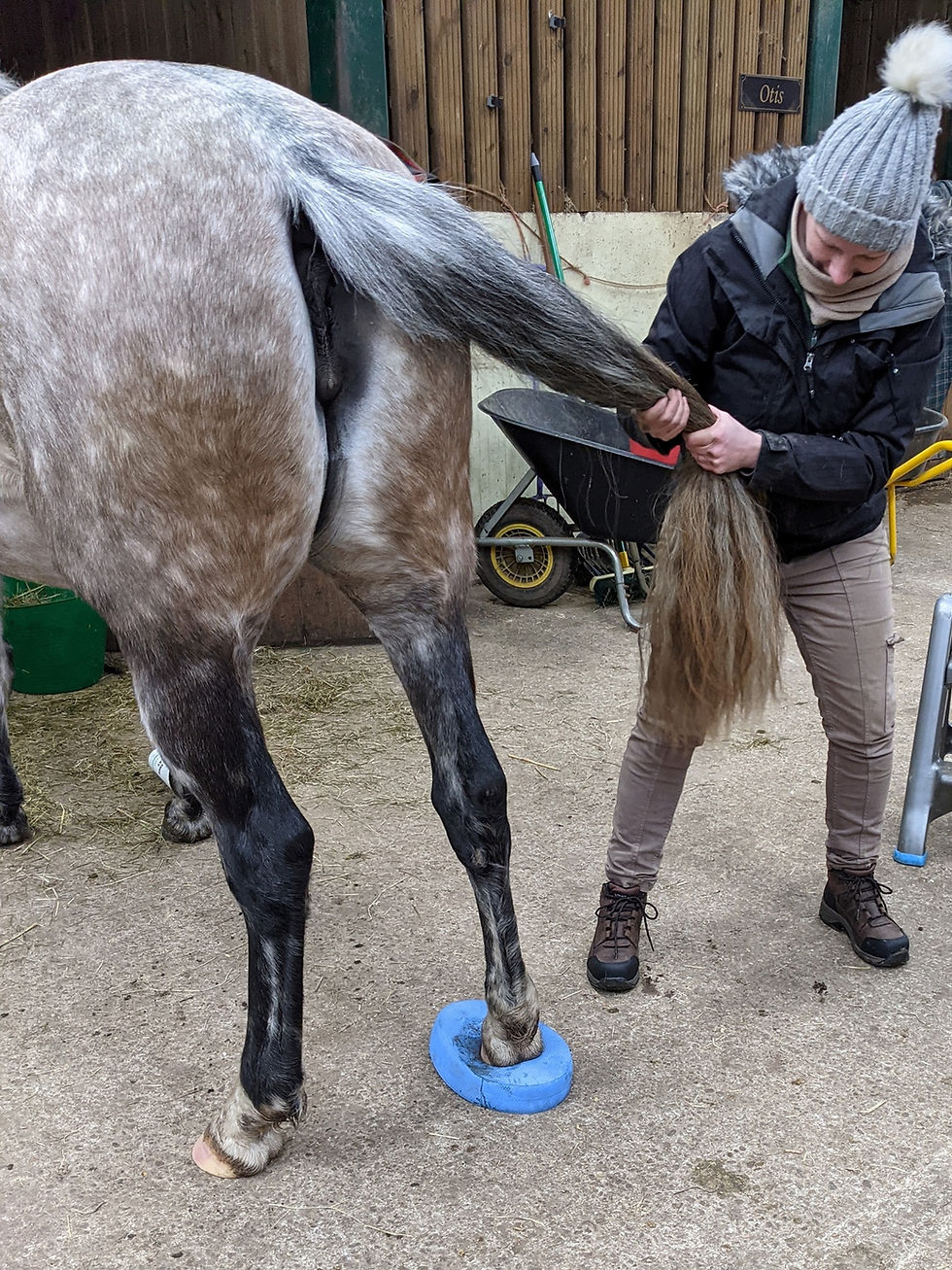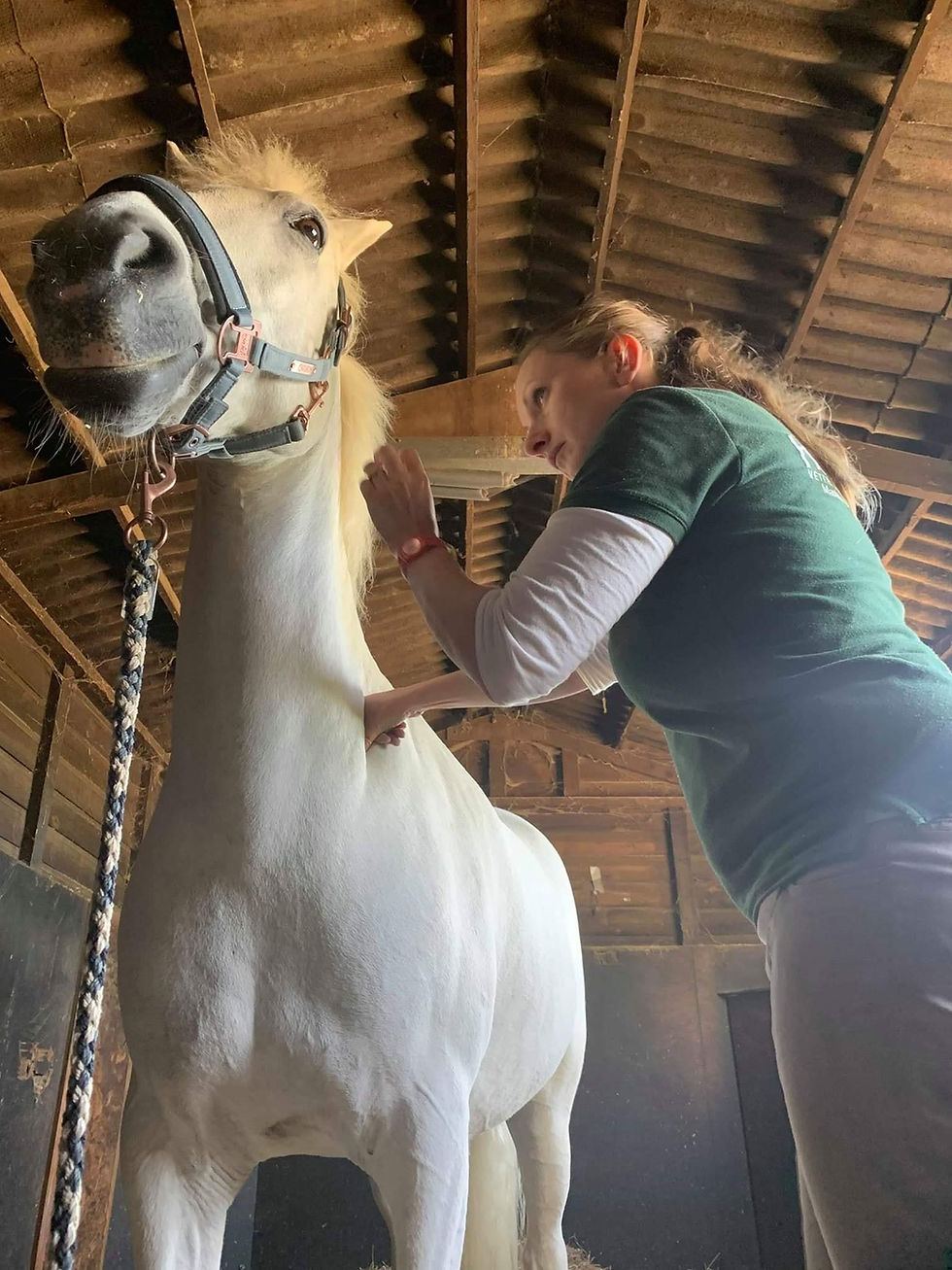

For Horses
Unable to make the stride?
Scoring lower in your dressage test?
Has there been a recent change of behaviour?
Or has he started bucking?

Many niggling problems can be identified and resolved with an equine physiotherapy session.
However should the problem require further investigation Maxine is able to help support you through the veterinary investigation process, working closely with your veterinary professional to ensure the best possible outcome for your horse.
Maxine is passionate about rehabilitation. So if your horse has recently undergone surgery, has been diagnosed with a tendon or ligament injury or has a chronic condition such as degenerative joint disease (DJD) physiotherapy can help. The sooner you are able to get a physiotherapist involved the better the outcome is likely to be.




Further treatment sessions: Each equine session will begin with a thorough reassessment to determine your animal’s progress. From there the treatment will be given along with a progressive or regressive exercise program for you to continue with.
The Subjective Assessment
Possibly one of the most important parts of the assessment. This will involve a discussion of the current problems, for example difficulty bending on one rein, details of any veterinary intervention, any past medical history, any behavioural issues, current abilities and future goals.
By discussing your personal goals for you and your horse it will allow us to develop a bespoke exercise programme for you and your animal.
The Objective Assessment
This begins with observational analysis, are there any muscle groups that look asymmetric? Weak? Tight? What is the overall posture like?
Followed by a gait analysis, which may include slow motion video footage, both on a hard surface, soft surface and where applicable on a circle/lunge. If you are having a particular problem in ridden work which has not been identified in the gait assessment a ridden assessment of the horse can also be carried out.
A full physical assessment is then completed and will include assessment of range of motion available at each joint, including the spine. Palpation of muscles to identify ant areas or soreness and assessment for any bony stiffness which may be contributing to the problem.
Step two
Step one
The Treatment Plan
Treatment prescribed will depend on what is found during the subjective and objective assessments and will be developed according to your animal’s needs. It may include, but is not limited to;
-
Specific soft tissue mobilisation
-
Trigger point release,
-
Myofascial Release
-
Reflex inhibition,
-
Muscle energy techniques,
-
Electrotherapy e.g. Transelctrical stimulation (TENS) Neuroelectrical Stimulation (NMS), BioMagnetic Therapy, Low Level Laser Therapy
-
Movement with manipulation,
-
Joint and Spinal mobilisation,
-
Sustained natural apophyseal glides
-
Kinesio Taping
Exercise Therapy plan: From the findings of the subjective and objective assessment along with the outcomes of the treatment a bespoke exercise program will be devised for you to put into place in the coming months.
Step three




Every step of the way you will be supported by a personal and professional service, we work closely with other animal professionals to ensure that you get the best possible treatment for your horse to achieve your goals.
It is advisable to also have a rider performance analysis session to ensure that your ailments are not also affecting your horse. Please see the ‘for human’ page, which can be found HERE.
Please note that any practitioner treating your horse, who is not deemed to be sound, must by law, seek consent from your veterinarian. Prior to assessment, we will contact your vet on your behalf to discuss your requirements and gain consent or we may already have a referral from them.